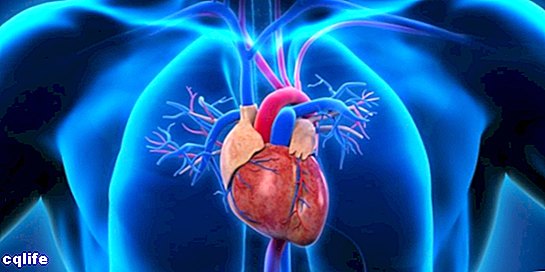We explain what is the major and minor circulation in the human body, the characteristics, functions and path of each one.

What is the major circulation and the minor circulation?
The circulatory system The human body is a double closed circuit, made up of the heart, arteries, veins and blood capillaries. It is called "double" because the blood passes through the heart twice, without mixing the arterial and venous blood, each through its conduits.
These two circuits of blood circulation are called major circulation and minor circulation. Both circuits occur simultaneously.
However, they have objectives different, occur through different channels and even involve different sectors of the heart, which when pumping prints energy in both circuits at the same time. Therefore, to understand them it is better to see each circuit separately.
Greater circulation
The larger circulation carries oxygen-rich blood to the body and removes CO2 and waste.The greater circulation, also known as systemic circulation, receives its name because it is the one that travels the greatest distance within the body. Its function is to feed all the tissues of the body, bringing them blood rich in oxygen and essential nutrients for the metabolism cell phone.
This circuit begins in the left ventricle of the heart, from where the blood leaves directly through the aorta (through the aortic valve that prevents it from returning), and spreads through the arteries of the body, which then pass to the arterioles, becoming thinner , and culminate in the fine network of capillaries that surround all tissues.
There, cells take in oxygen and nutrients. In return, they release the carbon dioxide that remains from cellular respiration, as well as other waste materials.
Then the blood passes to the venules, also small, to begin its return journey, gathering all the deoxygenated and contaminated blood in the increasingly larger veins of the body, until it reaches the superior and inferior vena cavae. It ends its journey in the right atrium of the heart.
Minor circulation

For its part, the minor circulation, also called pulmonary, is responsible for transporting deoxygenated blood and full of carbon dioxide to the lungs, where there is an exchange of gases that expels CO2 from the body and will replace it with oxygen from the air. Then it can become oxygenated to join the larger cycle.
This circuit begins in the right ventricle of the heart, with the blood that the right atrium drains from the entire body, and after crossing the pulmonary valve, it reaches the pulmonary artery, which then branches to lead the blood to the two lungs, one in each side of the heart.
Once in the lungs, the blood reaches the arterioles and then the capillaries, where hematosis can occur: the exchange of carbon dioxide for oxygen.
The blood, now rich in oxygen and free of CO2, then begins a short backward path towards the heart, through the pulmonary veins (two for each lung), which connect with the left atrium, completing the cycle and passing the control to the greater circulation.
